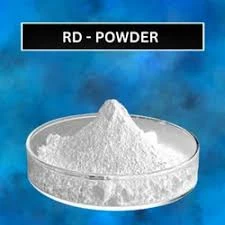
Oktoba . 10, 2024 13:12 Back to list
hydroxyéthyl cellulose
Hydroxyethyl Cellulose An Overview
Hydroxyethyl cellulose (HEC) is a cellulose derivative that has garnered significant attention in various fields due to its unique properties and versatile applications. Derived from natural cellulose, HEC is a non-ionic, water-soluble polymer that boasts numerous advantages, making it a popular choice in industries such as pharmaceuticals, cosmetics, food, and construction. This article explores the properties, production, applications, and benefits of hydroxyethyl cellulose.
Properties of Hydroxyethyl Cellulose
One of the most remarkable characteristics of HEC is its ability to modify the viscosity of solutions. When dissolved in water, HEC forms a clear, viscous gel, which can effectively control the flow and spread of various products. This thickening ability is crucial, especially in formulations where consistent texture and stability are required. HEC is also resistant to salt, which allows for its use in environments with varying ionic strengths. Moreover, it is both pH-stable and temperature-stable, making it suitable for diverse applications.
HEC is non-toxic and biocompatible, which further adds to its allure. These properties make it an ideal candidate for use in pharmaceutical applications where safety and compliance with health regulations are paramount. Additionally, its ability to retain moisture enhances its efficacy in personal care products, providing hydration and improving the feel of formulations on the skin.
Production of Hydroxyethyl Cellulose
The production process of hydroxyethyl cellulose involves the etherification of cellulose. The cellulose source is typically derived from wood pulp or cotton. In the etherification process, ethylene oxide is reacted with the cellulose in an alkaline environment. This reaction replaces hydroxyl groups in the cellulose chain with hydroxyethyl groups, resulting in the formation of HEC. The degree of substitution, which indicates the number of hydroxyl groups replaced, can be adjusted to tailor the properties of the resulting HEC for specific applications.
Applications of Hydroxyethyl Cellulose
hydroxyéthyl cellulose

HEC finds extensive use across various sectors. In the pharmaceutical industry, it is commonly used as a thickening agent, binder, or film-forming agent in formulations such as gels, ointments, and drug delivery systems. Its ability to retain moisture also aids in the manufacture of moisturizers, creams, and lotions in the cosmetic industry.
In the food industry, HEC serves as a food additive, where it acts as a thickener and stabilizer, enhancing the texture and shelf life of products. Its food-grade quality ensures it can be safely used in various edible products without compromising consumer health.
Additionally, the construction industry utilizes HEC as a key component in cement and mortar mixtures. Its thickening properties help improve workability, while its water-retention abilities enhance the drying process, ensuring the durability of structures.
Benefits of Hydroxyethyl Cellulose
The advantages of hydroxyethyl cellulose are manifold. Its versatility allows it to be employed in numerous formulations, making it an essential ingredient in various products. Its eco-friendly nature, being derived from natural cellulose, further enhances its appeal in today's environmentally conscious market.
HEC does not impart any taste or odor to formulations, ensuring that the end products maintain their desired characteristics. Moreover, its compatibility with a wide range of other ingredients makes it easy to incorporate into existing formulations without significant adjustments.
In conclusion, hydroxyethyl cellulose is a valuable compound with broad applications and benefits. Its unique properties make it indispensable in the pharmaceutical, cosmetic, food, and construction industries. As research continues to unveil new uses and potential formulations, HEC is likely to remain a cornerstone of modern product development, bridging the gap between natural polymers and high-performance materials.
-
Unlocking the Benefits of HPMC Products: A Gateway to Versatile Applications
NewsAug.07,2025
-
Unleashing the Potential of HPMC Ashland: A Comprehensive Look
NewsAug.07,2025
-
Tile Bonding Cellulose: The Key to Superior Adhesion and Durability
NewsAug.07,2025
-
Hydroxypropyl Methylcellulose Powder: The Versatile Component in Modern Pharmaceuticals
NewsAug.07,2025
-
Hydroxyethyl Cellulose: The Versatile Solution for Various Industries
NewsAug.07,2025
-
Hydroxyethyl Cellulose (HEC): The Versatile Polymer for Various Applications
NewsAug.07,2025







